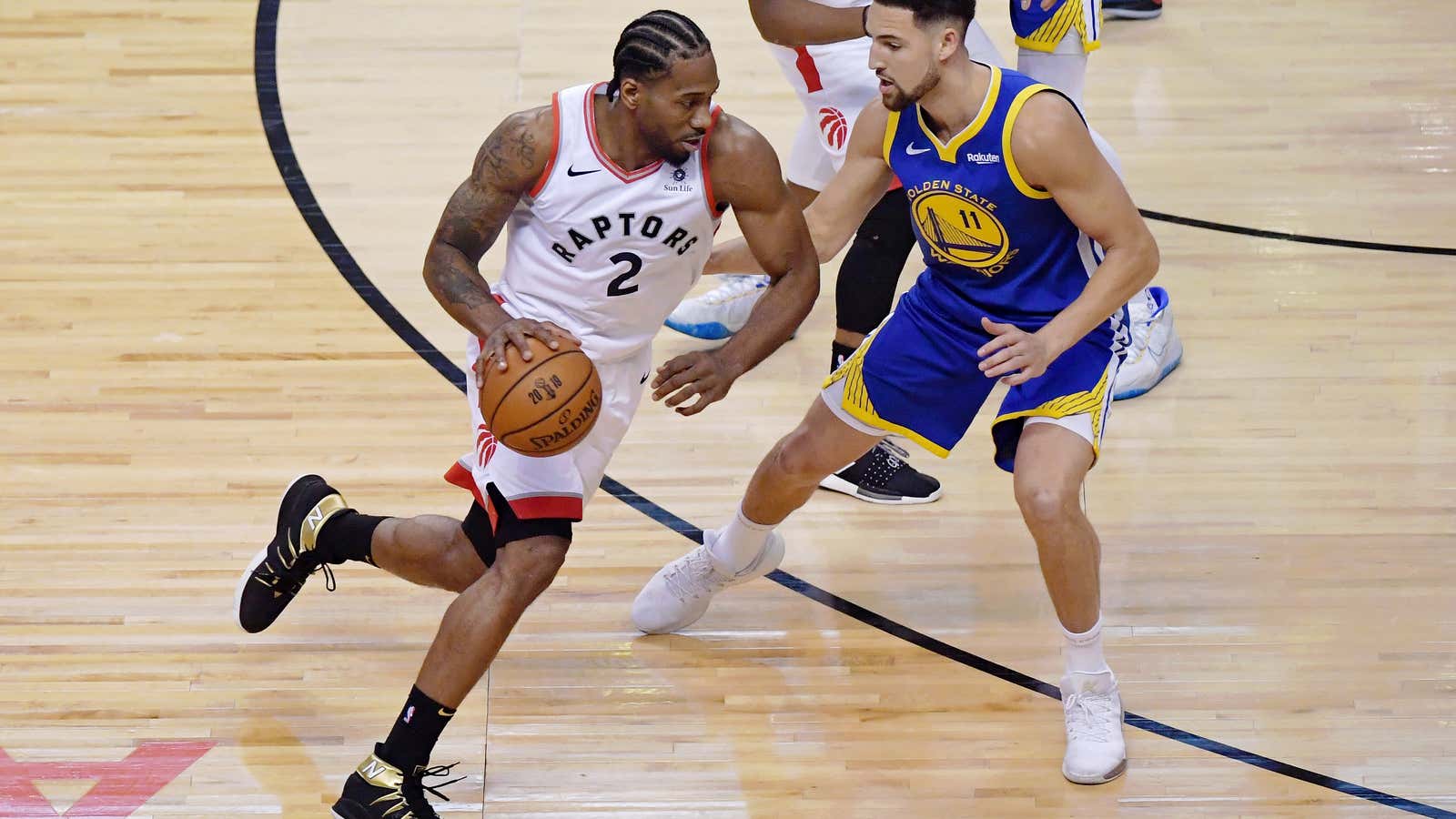After the Toronto Raptors won the NBA’s Eastern Conference finals on May 25, a reporter asked point guard Kyle Lowry what was different about this team. For years, the Raptors were a solid franchise, racking up wins in the regular season, only to fall short in the playoffs. Finally, they’d climbed the mountain—they were going to the NBA Finals. Lowry chuckled before knowingly glancing at the man sitting to his right: Kawhi Leonard.
Leonard is the undisputed centerpiece of the Raptors, a force on both ends of the court. On defense, he’s often tasked with shutting down the opposition’s best player and his tenacity has even earned him the nickname “the Klaw.” On offense, Leonard quietly leads the NBA in scoring this postseason, with 618 points across 20 games. His brilliance has propelled the Raptors to their first championship berth, vindicating team president Masai Ujiri, who agonizingly gutted the roster in pursuit of glory.
To ascend to the NBA Finals, the Raptors needed a franchise-altering superstar, and Ujiri bet the farm. Indeed, the 2019 Raptors are markedly different from their underwhelming predecessors. Ujiri made bold decisions last summer to prepare for this year’s postseason. He fired an immensely popular head coach—Dwane Casey—and to acquire Leonard, traded DeMar DeRozan, a cornerstone player who loyally spent nine years with the franchise. Ujiri made these audacious moves because he realized “good” wasn’t good enough.
It’s an approach with echoes in the business world, where companies treading water can embrace high-risk, high-reward strategies. Apple famously rediscovered its edge by bringing back former CEO Steve Jobs when it purchased his new company, NeXT Software. Pieces of NeXT’s software later appeared in the Mac operating system, but the true gamble was reinstating Jobs, Apple’s manipulative but essential mastermind. Another Silicon Valley darling, Google assumed a bundle of risks—legal and financial—when it acquired YouTube in 2006 to enter the world of online video.
Of course, daring moves can also end in disaster. For instance, in 1985, Coca-Cola experimented with the formula to its soft drink, introducing “New Coke.” Consumers were irate, and Coca-Cola relented. Similarly, in 2013, the Brooklyn Nets made a championship push by acquiring Kevin Garnett and Paul Pierce, two aging superstars. The players faded quickly, and rather than win a title, the Nets became one of the NBA’s bottom dwellers.
Trading for Leonard was not without risk. Though he came with a championship pedigree—he was named Finals MVP with the San Antonio Spurs in 2014—Leonard played just nine games during the previous season because of a lingering leg injury. Ujiri gambled that Leonard would return to form, and he’s still holding out hope that the Raptors will be able to re-sign the superstar this summer.
Regardless of whether Toronto can keep Leonard, the gambit has already paid off. The Raptors made painful but necessary changes, and that’s why they’re finally on basketball’s biggest stage.
